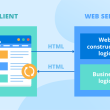Test team leaders often have to write down higher-level documents that describe general approaches to system testing and the development of the testing process in a project.
So keep reading if you want to discover the most popular software testing strategies and decide which one fits your business needs.
Static Testing Strategy
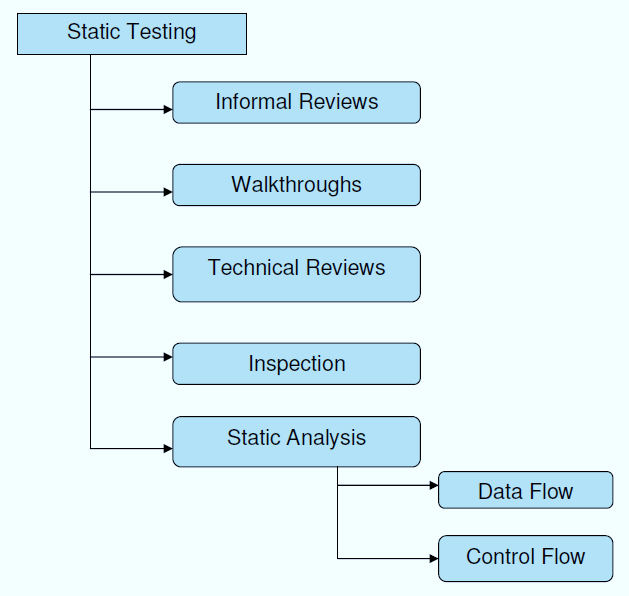
Source: guru99.com
Static testing is a type of software testing where software is tested without actually running the code. What’s more, the team finds and eliminates errors in various accompanying documents, for example, the specifications of the software.
Static testing has two types:
- Reviews
- Static analysis
Reviews are tests for finding defects in the documentation (requirements, design, test cases, etc.). Reviews are also classified into:
- Requirements inspection. It implies, in most cases, verification of documentation by team leaders, for example, the study of software requirements
- Informal reviews. The document is shown to the public, where everyone expresses their opinion about it. This helps to detect flaws in the early stages of product development
- Expert evaluation. A team of specialists checks the documentation in order to identify and eliminate errors
The main goal of reviews is to prevent the occurrence of problems in the development or testing process.
Static analysis means checking the code written by developers for flaws in the structure that can later lead to bugs.
The composition of static analysis includes an assessment of the quality of code. Various tools are used to analyze the code combination and compare it with compliance standards.
Static analysis can detect the following defects:
- Useless lines of code
- Unused variables
- Wrong syntax
- Variables with values that cannot be determined
- Endless cycles
Advantages of the static testing strategy are the following:
- It finds errors at the initial stages of software development, which helps to reduce the cost of fixing detected defects
- The feedback left during this testing process helps to improve the functional side of it, which is also aimed at avoiding similar bugs
- Gives a high level of information about software quality problems
- Helps to improve the exchange of important information between employees
- Fixing bugs requires minimal effort, which helps to make development even more productive
Disadvantages of the static testing strategy:
- Since static testing is done manually, the process is lengthy
- Prevents finding some runtime vulnerabilities
Dynamic Testing Strategy
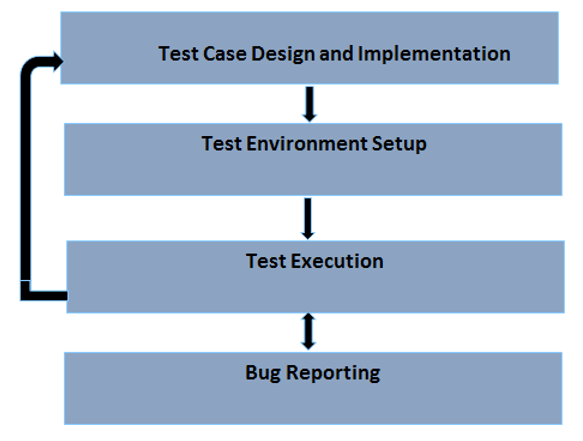
Source: guru99.com
Dynamic testing is aimed at testing the functionality of software during code execution, of whether it works as expected. The dynamic type of testing consists of directly testing the software in real-time, by providing input information and examining the resulting behavior of the application.
Let’s explain this with a simple example of the login functionality. When you register a new account and come up with a password, you need to follow certain rules to create a secure code. For example, the password must consist of at least 7 characters, have both uppercase and lowercase letters, must contain at least one number, etc. These are the stated parameters or conditions that the user must adhere to when registering. If you enter other data that does not meet these conditions, the program must reject them. When testing this function, you must enter a password according to the indicated parameters and then check the result.
This testing method helps the team to test various functional points of the software. If their existence will be ignored and do not react to them in any way, this can affect the performance, functionality, and reliability of the application in a certain way.
Advantages of the dynamic testing strategy:
- In the process of testing, a thorough study of all the functionality of the program is carried out, as a result of which we obtain a high-quality verification
- Dynamic testing is a well-structured process that checks the program on the part of the user, which, in turn, significantly improves the quality of the software
- Fixing complex defects that could go unnoticed at the stage of checking the code
- The dynamic type of testing, with the help of special tools, can be automated
Disadvantages of dynamic testing strategy:
- Dynamic testing is a fairly complex mechanism, the execution of which requires a lot of time
- The dynamic method of testing is an expensive process
- Basically, this testing method is performed after coding is completed, and bugs are already in the development life cycle
White-Box Testing Strategy
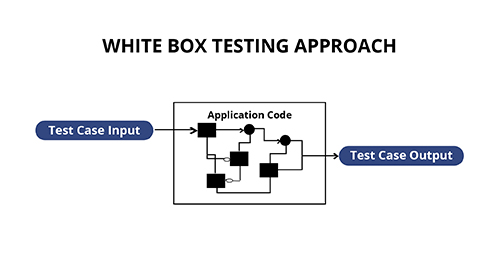
Source: cyberhoot.com
White-box testing, aka structural testing, is a software testing strategy that assumes that the internal structure of the system is known to the tester. We choose input values based on our knowledge of the code that will process them. Similarly, we know what the result of this processing should be. Knowledge of all the features of the product under test and its implementation are mandatory for implementing this strategy. White-box testing is a deepening into the internal structure of the system, beyond its external interfaces.
This type of testing is based on the analysis of the internal structure of a component or system. Its test design includes writing test cases based on an analysis of the internal structure of a whole system or its component.
You may wonder: why is it called white-box? It’s because the software under test is like a transparent box for the QA engineer, meaning they can see its contents perfectly. For example, the tester, who is usually a programmer, examines the code implementation of an input field on a web page, determines all intended (both correct and incorrect) and non-intended user inputs, and compares the actual result of the program execution with the expected one.
White-box testing is like a mechanic examining a car engine to find out why the speedometer works incorrectly, for example.
The white-box technique is applicable at different levels of testing – from unit to system, but is mainly used for the implementation of unit testing of a component by its author.
Advantages of the white-box testing strategy:
- Testing can be done at an early stage as there is no need to wait for the user interface to be created
- You can conduct more thorough testing, covering a large number of program execution paths
Disadvantages of white-box testing strategy:
- A large amount of special knowledge is required to perform white-box testing
- When using test automation at this level, maintaining test scripts can be quite expensive if the program changes frequently
Black-Box Testing Strategy
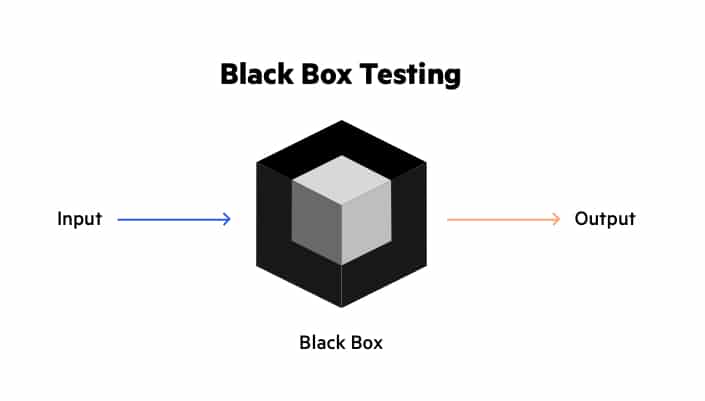
Source: imperva.com
Black-box testing, also known as behavior-driven testing, is a testing technique based solely on working with the external interfaces of the system under test. Black-box testing basically means writing tests, both functional and non-functional, that do not involve knowledge of the internals of a component or system.
So why black-box? In contrast to white-box testing, here the tested software is like a black opaque box, the contents of which the tester does not see. The purpose of this strategy is to look for bugs in the following categories:
- Missing and incorrectly implemented functions
- Interface errors
- Errors in data structures or organization of access to external databases
- Behavioral errors or insufficient system performance
Thus, we have no idea about the internal structure of the system. You need to focus on what the program does, not how it does it.
To give you an example, the QA engineer tests the website without knowing the specifics of its implementation, using only the input fields and buttons provided by the developer. The source of the expected result is the specification. Black-box testing can be either functional or non-functional. Functional testing involves checking the operation of system functions, and non-functional testing, respectively, the general characteristics of our program.
The black box technique is applicable to all levels of testing (from unit to acceptance) for which there is a specification. For example, when performing system or integration testing, the requirements or functional specifications will be the basis for writing test cases.
Advantages of the black-box testing strategy:
- Testing is performed from the viewpoint of the end-user and can assist in detecting inaccuracies and inconsistencies in the specification
- The QA engineer doesn’t need to know programming languages and go deep into the features of the program implementation
- Testing process can be performed by specialists independently of the development department, which helps to avoid bias
- You can start writing tests as soon as the test case is given
Disadvantages of black-box testing strategy:
- Only a very limited number of program execution paths are tested
- Without a clear specification (and this is rather a reality on many projects), it is rather difficult to create effective test cases
- Some tests may be redundant if they have already been carried out by the developer at the unit test level
In conclusion
There is no single and universal testing strategy suitable for everyone. It needs to be compiled individually for each project. It is highly important to understand that the strategy should not be an end in itself – it is only a tool that allows us to achieve our goals.
You always need to remember that the project can grow, and if today it is too early to bother with performance, then tomorrow it may be time. Therefore, after drawing up a strategy, it is important to update and review it regularly and keep the team up-to-date with the changes.
After determining a strategy, it usually becomes clear where vulnerabilities are both in the testing and performance of your product. This naturally leads to goal setting, watching the dynamics, and updating the strategy after some time.


